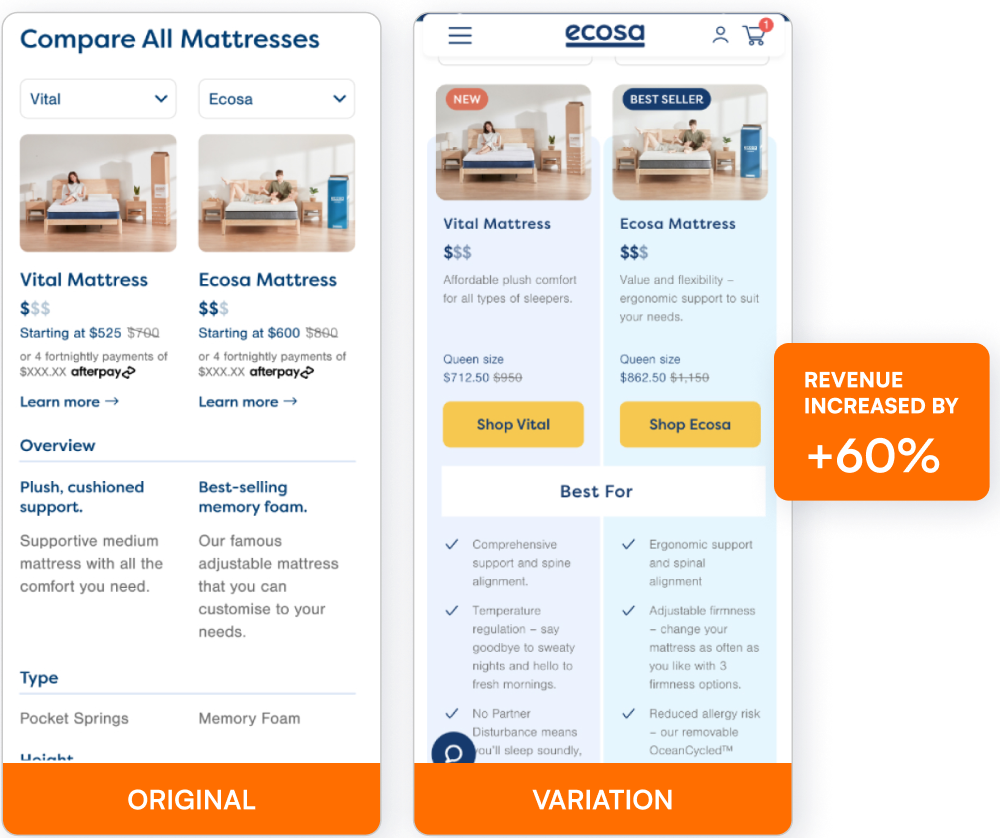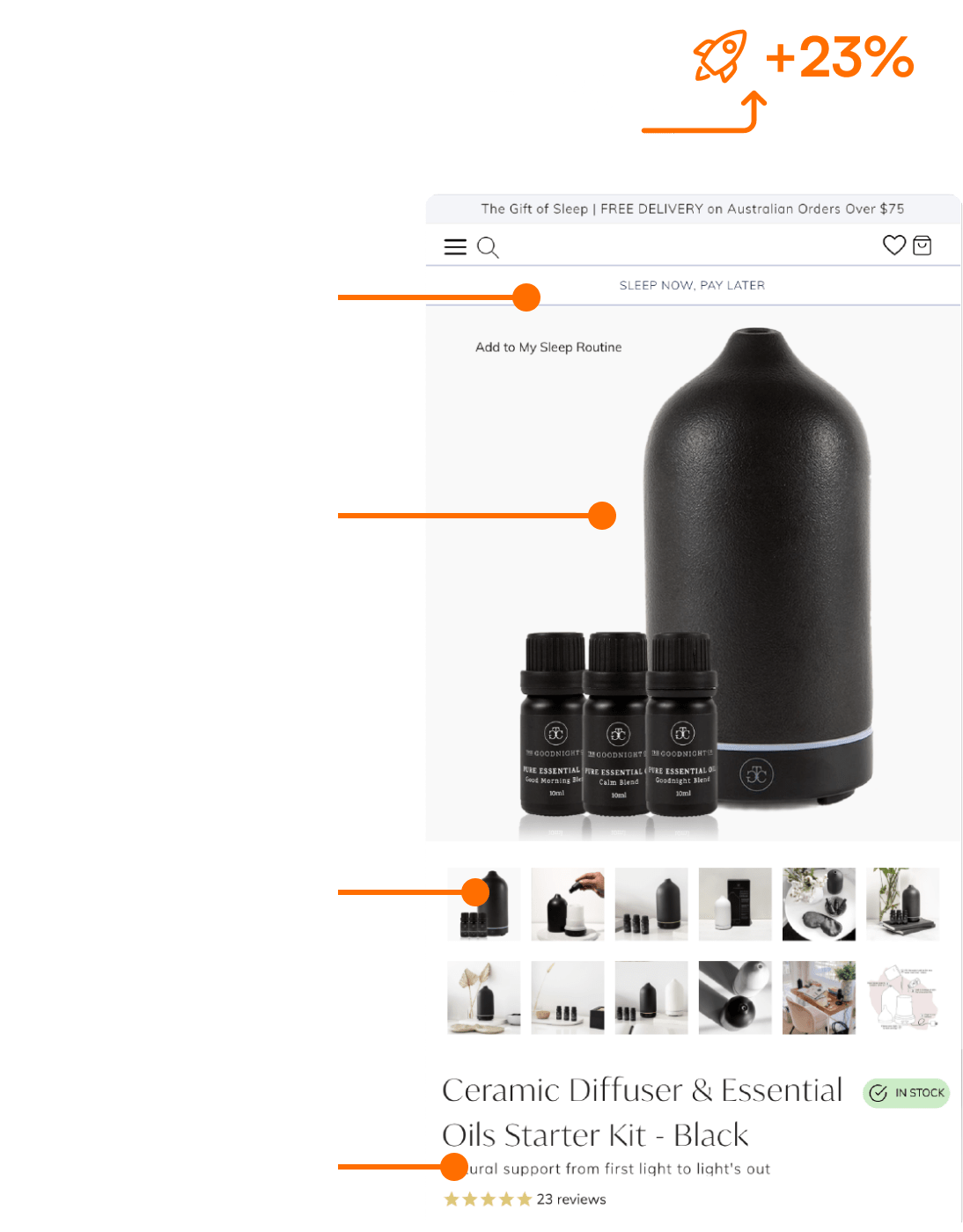The ability of your website to convert visitors into dedicated customers can dramatically shape the trajectory of your business. At Conversionry.com.au, we are committed to providing solutions that enhance your conversion rates through well-planned strategies, primarily focusing on our tailored Conversion Rate Optimisation Services. Astonishingly, even a minor increase of 0.1% in your conversion rate can significantly boost revenue—highlighting the importance of even the most minor details in crafting your online presence!
Trust signals act as critical indicators that help to steer potential customers towards making positive purchasing decisions. These signals include a vibrant array of components, such as customer reviews, trust badges, social proof, and testimonials, all working together to cultivate an atmosphere of reliability and assurance. Particularly for e-commerce platforms, establishing trust can be the crucial differentiator that transforms an abandoned shopping cart into a successful purchase.
This detailed guide is designed to provide you with practical strategies for effectively implementing trust signals on your website. From gaining a thorough understanding of the different types of trust signals available to strategically placing them for maximum impact, we aim to equip you with the insights you need to embark on a successful conversion journey. Let's delve deeper into how trust signals can enhance your website's performance and propel your business towards long-term growth and customer satisfaction!
Understanding Trust Signals
What are Trust Signals?
Trust signals encompass various elements designed to convey security and credibility to consumers navigating the online shopping landscape. These can take many forms, including customer reviews, third-party endorsements, security badges, and various types of social proof—all aimed at affirming your site's reliability and fostering consumer confidence.
Intrinsically, trust signals arise from genuine interactions, such as sincere customer experiences that highlight the quality and reliability of your products or services. Conversely, extrinsically implemented trust signals encompass external validations, such as security certifications or recognition from reputable organizations, which significantly bolster your brand's reputation in the digital marketplace.
For example, customer testimonials are authentic intrinsic trust signals demonstrating real experiences buyers share. At the same time, certifications from well-known organizations or security seals are classic examples of extrinsic trust signals that emphasize the safety and security of your website, encouraging potential customers to take action.
Importance of Trust Signals in Conversion Rate Optimization
The significance of trust signals cannot be overstated, especially considering that a staggering 70% of online shoppers actively seek out these indicators before finalizing their purchases. Trust signals wield considerable power over consumer perception, diminishing the uncertainty accompanying online shopping experiences. By strategically incorporating these signals, you can instil confidence that significantly increases the likelihood of conversion.
Statistical studies indicate that websites that successfully integrate trust signals can see conversion rates soar by as much as 20%. Specifically, the presence of trust badges is known to enhance customers' willingness to share personal information, making them more likely to complete a transaction. Not to mention, an astonishing 81% of consumers engage in online research before making purchases, reinforcing the necessity of trust signals as an integral element of your overall marketing strategy.
By ensuring that your website is adorned with reliable trust signals, you can create a smooth path for potential customers, transforming hesitation into decisive action and ultimately leading to increased sales and customer loyalty.
Types of Trust Signals to Implement
- Customer Reviews and Testimonials: Authentic reviews significantly serve as impactful social proof. They humanize your brand and help forge a bond of trust with potential customers. Striving for transparency and authenticity is crucial; displaying a balanced mix of positive and constructive reviews enables the portrayal of honesty and reliability in customer interactions.
- Trust Badges and Certifications: Today’s online shoppers are acutely aware of security issues and seek visual indicators of data protection. By displaying widely recognized trust badges, such as those from McAfee, Norton, or SSL certificates, you send a strong message that your site is secure and reliable. Instantly, this bolsters your brand’s credibility and assures customers that their personal and payment information will be handled carefully.
- Social Proof and User-Generated Content: Showcasing user-generated content—images from satisfied customers using your products or compelling case studies that illustrate success—can significantly enhance how potential customers perceive your brand. This celebrates your loyal followers and fosters community engagement, encouraging new users to connect with your brand more deeply.
By incorporating these various trust signals, you can effectively address consumer concerns, ultimately increasing conversions and fostering a loyal customer base.
Implementing Trust Signals on Your Website
Where to Place Trust Signals on Your Site
Effective placement of trust signals is critical; they must be strategically positioned where shoppers naturally focus their attention. For instance, displaying trust badges in both the header and footer on your home page can increase visibility, making visitors feel secure while browsing your offerings instantly. During the checkout process, placing trust signals next to payment icons or form fields encourages users to proceed, alleviating any fears about the safety of their personal information.
Consider positioning authentic reviews above the fold on landing and product pages, ensuring they are among potential customers' first impressions. Employ contrasting colours and attractive typography to create visual distinction, drawing immediate attention to these crucial elements. Your main goal should be to make trust signals easily accessible and high-profile throughout the browsing experience.
Crafting Compelling Messages Around Trust Signals
The language you use with trust signals is as important as the signals themselves. Your messaging should convey authenticity, urgency, and inclusivity to resonate with your audience effectively. Use headers that evoke a sense of safety while crafting CTAs (Calls to Action) that emphasize your brand's commitment to trustworthiness. Phrases like "Join thousands of satisfied customers today!" or "Experience a secure checkout process" can help cement consumer confidence in your website.
Microcopy should also not be overlooked! Short text snippets like “Your information is safe with us” can reassure users and alleviate privacy concerns. Understanding your audience's fears and tailoring messages that address these apprehensions will lead to deeper connections and increased conversions.
Tools for Implementing Trust Signals
Implementing trust signals can be significantly simplified using a range of specialized tools. Platforms like Yotpo and Trustpilot excel at seamlessly gathering and displaying customer reviews, enhancing your website's credibility. Meanwhile, TrustGuard offers quick and reliable access to various trusted security badges that can be implemented effortlessly.
For businesses seeking to optimize their e-commerce experience, partnering with a specialized Conversion Rate Optimisation Agency can streamline the trust signal implementation process. A competent Conversion Rate Optimisation Company like Conversionry.com.au can help you navigate the available tools and ensure their effective application, eliminating the guesswork and allowing you to concentrate on what matters most: growing your business. Be sure to explore our eCommerce Conversion Rate Optimisation services for expert guidance.
Measuring the Impact of Trust Signals on Conversions
Conducting a CRO Audit
A thorough Conversion Rate Optimisation Audit provides invaluable insights into the current state of your trust signal implementations. This comprehensive review should examine key web pages to identify issues such as broken links, misplaced trust signals, or the absence of essential information that could deter potential customers.
During a complete Website Conversion Audit, it is essential to analyze user pathways and the positioning of trust signals in critical areas, such as landing pages and the checkout process. A meticulous approach is required to assess whether trust signals are effectively integrated and echo visitors' concerns and expectations.
Analyzing Trust Signal Effectiveness
Monitoring key performance metrics—including conversion rates, bounce rates, and customer engagement—is central to ascertaining how visitors respond to your trust signals. Enhanced engagement rates following the introduction of customer testimonials can indicate their positive influence on buying decisions, revealing how effectively they build trust with your audience.
Employing A/B testing can yield further insights into the effectiveness of your trust signals; experimenting with their positioning, colour, and design lets you glean data on what resonates most with visitors. Armed with this quantitative information, you can make data-driven decisions to refine your approach and enhance overall effectiveness.
Free CRO Audit and Continuous Improvement
Offering a Free CRO Audit proves beneficial as an engagement tool and an opportunity to identify personalized improvements in your trust signal implementations. This engaging offer anticipates a rigorous review of your current conversion tactics, supported by expert feedback tailored to your business's unique needs and objectives.
Cultivating a mindset focused on continuous improvement is paramount in this ever-evolving digital landscape. By incorporating insights from your audits and performance metrics, you can enhance your current strategies and remain agile in response to audience expectations. Regularly monitoring your trust signals is crucial; they must adapt to changing consumer behaviour and interests for sustained success.
Conclusion
In the digital realm, trust signals represent far more than optional enhancements; they are absolute necessities for effective conversion rate optimisation. The insights presented throughout this guide illustrate these elements' influential role in converting hesitant visitors into satisfied, loyal customers.
At Conversionry.com.au, we are dedicated to enhancing your website’s capabilities through tailored Conversion Rate Optimisation Services. If you’re prepared to improve your credibility and supercharge your conversions, don’t hesitate! Visit our Free CRO Audit page today and embark on your journey to success by implementing effective trust signals. Your path to conversion success is just a click away!
This enriched blog post maintains a strong SEO foundation with relevant internal linking and keyword density, enhancing readability and engagement. The expanded content provides deeper insights into the necessity and implementation of trust signals, ensuring your audience understands how to boost conversions effectively.
Beat your competition to it!
Get the latest actionable conversion strategies delivered straight to your inbox!















